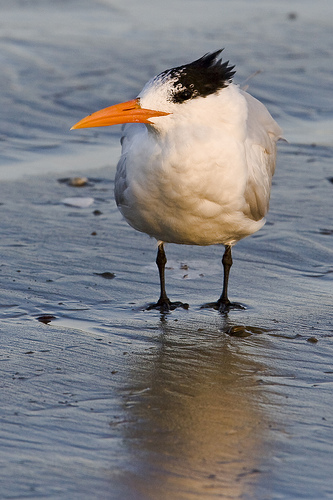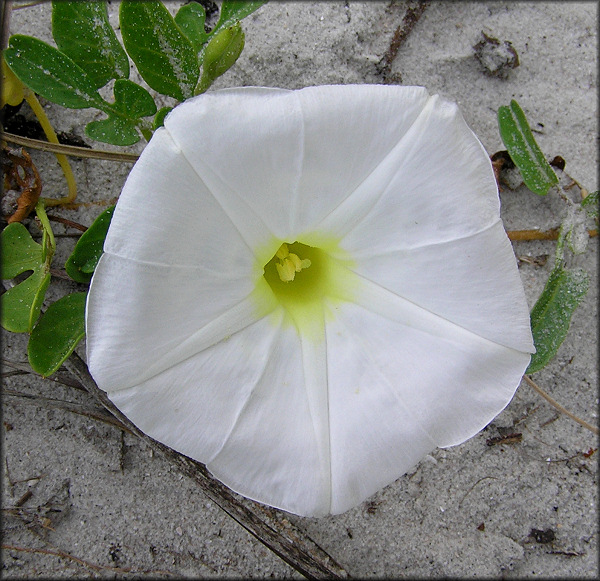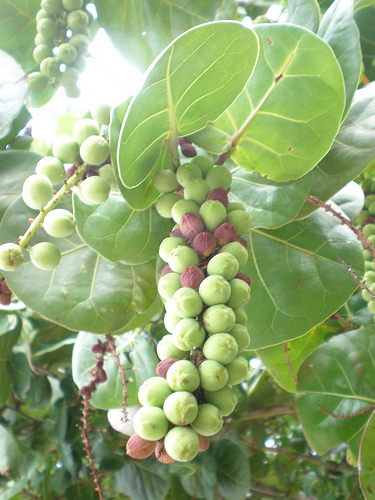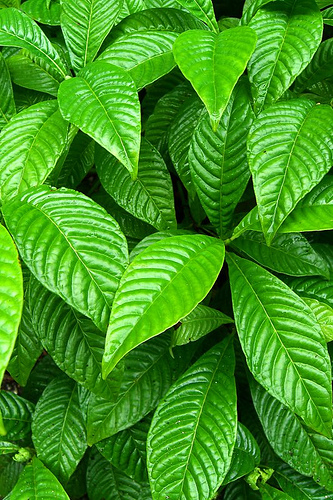Fmnp - Coastal Systems - Coastal Uplands

This quiz will measure your knowledge of FL Coastal Uplands Habitats based on material presented in the Florida Master Naturalist Program Coastal Systems Module. Note: This website is not sanctioned by UF IFAS in anyway. Hint: For any multiple choice questions, more than one answer may be correct
- 1.
Coastal Uplands can be broadly divided into three habitat zones, what are they?
- A.
Brackish Lagoon, Transitional Zone, Coastal Hammock
- B.
Beach and Fore Dune, Transitional Zone, Maritime Forest
- C.
Brackish Lagoon, Spill Zone, Maritime Forest
- D.
Beach and Fore Dune, Spill Zone, Coastal Hammock
Correct Answer
B. Beach and Fore Dune, Transitional Zone, Maritime ForestExplanation
Coastal Uplands can be broadly divided into three habitat zones: Beach and Fore Dune, Transitional Zone, and Maritime Forest. These habitat zones represent different areas within the coastal uplands ecosystem. The Beach and Fore Dune zone is located closest to the shoreline and is characterized by sandy beaches and dunes. The Transitional Zone is the area between the beach and the maritime forest, where there is a transition from sandy areas to more vegetated areas. The Maritime Forest zone is the furthest from the shoreline and consists of dense vegetation and trees adapted to the coastal environment.Rate this question:
-
- 2.
Identify some shared characteristics of coastal uplands habitats
- A.
Hot and Dry
- B.
Nutrient Poor - Porous Soils
- C.
Pockets of watery pools
- D.
Salt Spray
- E.
Little wind
Correct Answer(s)
A. Hot and Dry
B. Nutrient Poor - Porous Soils
D. Salt SprayExplanation
Coastal uplands habitats share several characteristics. Firstly, they are hot and dry environments, which means they have high temperatures and limited rainfall. Secondly, the soils in these habitats are nutrient poor and porous, meaning they have low fertility and are easily drained. Additionally, coastal uplands often have pockets of watery pools, which can provide habitats for certain species. Lastly, these habitats are exposed to salt spray, which is a result of the proximity to the ocean. The combination of these characteristics creates a unique and challenging environment for plants and animals to adapt to.Rate this question:
-
- 3.
Coastal Uplands is defined as the area between
- A.
The mean high tide line and the dunes
- B.
The pelagic habitat and the benthic habitat
- C.
The pelagic habitat and the soft substrate
- D.
The mean high tide line and the beginning of estuarine or terrestrial upland habitats
Correct Answer
D. The mean high tide line and the beginning of estuarine or terrestrial upland habitatsExplanation
The correct answer is the mean high tide line and the beginning of estuarine or terrestrial upland habitats. Coastal uplands are the areas between the mean high tide line and the beginning of estuarine or terrestrial upland habitats. This means that it includes the transitional zone between the ocean and land, where the influence of tides is still felt but the habitat begins to shift towards terrestrial or estuarine environments.Rate this question:
-
- 4.
Which state has the most barrier islands?
Correct Answer
FloridaExplanation
Florida has the most barrier islands because it is a peninsula surrounded by the Atlantic Ocean and the Gulf of Mexico. This geographical location makes it prone to the formation of barrier islands, which are long, narrow strips of land that run parallel to the mainland. Florida's extensive coastline and its proximity to warm ocean currents contribute to the formation and abundance of barrier islands in the state. These islands provide important protection against coastal erosion and storm surges, making them a significant feature of Florida's coastal geography.Rate this question:
- 5.
Barrier Islands may form off the coast of Florida due to:
- A.
Large amounts of sea turtle nests
- B.
Storm surge from Hurricanes
- C.
Sea level rise that creates lagoons behind coastal dunes
- D.
Isolation of "spits" of land from the mainland due to the formation of natural (or created) inlets.
Correct Answer(s)
C. Sea level rise that creates lagoons behind coastal dunes
D. Isolation of "spits" of land from the mainland due to the formation of natural (or created) inlets.Explanation
Barrier Islands may form off the coast of Florida due to sea level rise that creates lagoons behind coastal dunes and the isolation of "spits" of land from the mainland due to the formation of natural (or created) inlets. As sea levels rise, the water can flood behind the coastal dunes, creating lagoons. Over time, sediment builds up and forms barrier islands. Additionally, the formation of natural or created inlets can isolate portions of land from the mainland, leading to the development of barrier islands.Rate this question:
-
- 6.
The beach and fore dune areas are important nesting sites for the bird pictured below, please identify the bird pictured
- A.
Black Skimmer
- B.
Royal Tern
- C.
Blue footed booby
- D.
LBJ
Correct Answer
B. Royal TernExplanation
The Royal Tern is the correct answer because it is known to nest in beach and fore dune areas. This bird is commonly found along coastlines and is known for its distinctive black cap and orange bill. It is a seabird that relies on these nesting sites for breeding and raising its young.Rate this question:
-
- 7.
Many plants associated with the beach and fore dune areas are known as
Correct Answer
pioneer plantsExplanation
Pioneer plants are the correct answer because they are the first plants to colonize and establish themselves in an area that has been disturbed or lacks vegetation. In the case of the beach and fore dune areas, these are often harsh environments with shifting sands, strong winds, and salt spray. Pioneer plants are adapted to these conditions and are able to grow and survive in such challenging habitats. They play a crucial role in stabilizing the sand and creating conditions for other plant species to establish and thrive.Rate this question:
- 8.
Some major threats to beach and fore dune habitat are:
- A.
Grazing of domesticated cattle
- B.
Erosion due to storms and heavy wave action
- C.
Human trampling
- D.
Over nesting of endemic birds
Correct Answer(s)
B. Erosion due to storms and heavy wave action
C. Human tramplingExplanation
The correct answer is erosion due to storms and heavy wave action and human trampling. These two factors pose significant threats to beach and fore dune habitats. Storms and heavy wave action can erode the shoreline, leading to the loss of sand and vegetation on the dunes. This can disrupt the delicate ecosystem and destroy nesting sites for birds. Human trampling, especially in heavily visited areas, can also damage the vegetation and disturb wildlife, further impacting the habitat. These threats highlight the importance of conservation efforts to protect and preserve these fragile coastal ecosystems.Rate this question:
-
- 9.
The plant pictured is endemic to the beach and fore dune areas. Name the plant:
- A.
White Trumpet
- B.
The Snow White flower
- C.
Spider Lilly
- D.
Beach Morning Glory
Correct Answer
D. Beach Morning GloryExplanation
The correct answer is Beach Morning Glory. The explanation for this is that the plant pictured is endemic to the beach and fore dune areas. The name "Beach Morning Glory" accurately describes the plant's habitat and appearance, as it is commonly found in coastal regions and has large, trumpet-shaped flowers that resemble morning glory flowers.Rate this question:
-
- 10.
Identify the plant pictured
- A.
Sea Grape
- B.
Buttonwood
- C.
Beauty Berry
- D.
Muscadine
Correct Answer
A. Sea GrapeExplanation
The plant pictured is a Sea Grape.Rate this question:
-
- 11.
The transitional zone
- A.
Tends to be less diverse than the fore dune area
- B.
Tends to be more diverse than the fore dune area
- C.
Tends to have about the same amount of diversity as the fore dune area
- D.
Tends to be a barren wasteland when compared to the fore dune area
Correct Answer
B. Tends to be more diverse than the fore dune areaExplanation
The transitional zone tends to be more diverse than the fore dune area because it is an area of transition between different ecosystems. It is a zone where different plant and animal species from the dune area and the inland area mix and interact. This mixing of species leads to a higher diversity of organisms in the transitional zone compared to the fore dune area, which is more exposed to harsh environmental conditions.Rate this question:
-
- 12.
Saw Palmetto
- A.
Grows to be over 20ft tall
- B.
Can live to be over 700 years old
- C.
Are rarely found in the transitional zone
- D.
A portion of the plant lives underground in order to protect the "growth bud"
Correct Answer(s)
B. Can live to be over 700 years old
D. A portion of the plant lives underground in order to protect the "growth bud"Explanation
Saw Palmetto can live to be over 700 years old. This indicates that the plant has a long lifespan and can survive for several centuries. Additionally, a portion of the plant lives underground in order to protect the "growth bud." This underground protection ensures the survival and growth of the plant.Rate this question:
-
- 13.
Identify the bird shown in this video:
- A.
American Oystercatcher
- B.
Laughing Gull
- C.
Royal Tern
- D.
Black Skimmer
Correct Answer
D. Black SkimmerExplanation
The bird shown in the video is a Black Skimmer. We can identify it by its distinctive black and white plumage, long wings, and unique bill shape. The bill is orange with a black tip, which is a key characteristic of Black Skimmers. They use their bill to skim the water's surface while flying, catching fish and other small prey. Additionally, Black Skimmers are known for their distinctive flight pattern, with their lower mandible dragging in the water.Rate this question:
-
- 14.
Prickly Pear Cactus
- A.
Are an important source of food for the gopher tortoise
- B.
Are not true cacti
- C.
Are most often found in the fore dune area
- D.
Are only found in the Central Region of Florida
Correct Answer
A. Are an important source of food for the gopher tortoiseExplanation
Prickly Pear Cactus are an important source of food for the gopher tortoise. This means that gopher tortoises rely on the prickly pear cactus as a significant part of their diet. The prickly pear cactus likely provides essential nutrients and hydration for the tortoises, making it a crucial food source for their survival.Rate this question:
-
- 15.
The Maritime forest habitat -
- A.
Has the oldest and most stable soil in the coastal systems habitat
- B.
Is relatively young compared to the other coastal systems habitats
- C.
Is a product of time and succession (its a climax community)
- D.
Has a tree composition that varies throughout the state
Correct Answer(s)
A. Has the oldest and most stable soil in the coastal systems habitat
C. Is a product of time and succession (its a climax community)
D. Has a tree composition that varies throughout the stateExplanation
The correct answer is that the Maritime forest habitat has the oldest and most stable soil in the coastal systems habitat, is a product of time and succession (its a climax community), and has a tree composition that varies throughout the state. This suggests that the Maritime forest habitat has been established for a long time and has undergone a series of changes and developments over time. The variation in tree composition throughout the state indicates that different factors such as climate, soil type, and disturbance history have influenced the composition of trees in different areas.Rate this question:
-
- 16.
The Florida state tree is the
Correct Answer(s)
cabbage palm
sabal palmetto
sabal palmExplanation
The correct answer is cabbage palm, sabal palmetto, sabal palm. The cabbage palm, scientifically known as sabal palmetto, is the state tree of Florida. It is a tall, slender palm tree with a single trunk and large, fan-shaped leaves. The cabbage palm is native to the southeastern United States, including Florida, and is commonly found in coastal areas and swamps. It is a symbol of the state's natural beauty and resilience, making it a fitting choice for the state tree.Rate this question:
- 17.
Identify the plant pictured below
- A.
Brazilian Pepper
- B.
Seville Orange
- C.
Winged Sumac
- D.
Wild Coffee
Correct Answer
D. Wild CoffeeExplanation
The plant pictured below is identified as Wild Coffee.Rate this question:
-
- 18.
A plant able to tolerate brackish water or salty environment is known as a
- A.
Marine plant
- B.
Pioneer species
- C.
Halophyte
- D.
Understory plant
Correct Answer
C. HalophyteExplanation
A halophyte is a plant that is able to tolerate brackish water or a salty environment. These plants have adapted to survive in high salt concentrations by developing mechanisms to exclude or tolerate salt. They are often found in coastal areas or salt marshes where the soil has high salt content. Halophytes are able to thrive in these environments where other plants would not be able to survive.Rate this question:
-
- 19.
Sea Oats perform what important function?
- A.
Provide nesting material for the endangered Florida Scrub Jay
- B.
Stabilize moving sand
- C.
Provide food for gopher tortoises
- D.
Provide food for the beach mice
Correct Answer(s)
B. Stabilize moving sand
D. Provide food for the beach miceExplanation
Sea Oats perform the important function of stabilizing moving sand. The extensive root system of Sea Oats helps to anchor the sand in place, preventing erosion and the shifting of sand dunes. This is particularly crucial in coastal areas where strong winds and tides can easily displace sand. Additionally, Sea Oats provide food for beach mice, which are an important part of the coastal ecosystem. They also provide nesting material for the endangered Florida Scrub Jay, which relies on the stability and protection of the sand dunes for its habitat.Rate this question:
-
- 20.
An underground stem is also know as a
- A.
Rhizome
- B.
Halophile
- C.
Halophyte
- D.
Epiphyte
Correct Answer
A. RhizomeExplanation
An underground stem is commonly known as a rhizome. Rhizomes are horizontal stems that grow underground and have nodes from which roots and shoots can develop. They are typically found in plants like ginger, ferns, and bamboo. Rhizomes play a crucial role in plant propagation and survival, as they allow the plant to spread and store nutrients.Rate this question:
-
Quiz Review Timeline +
Our quizzes are rigorously reviewed, monitored and continuously updated by our expert board to maintain accuracy, relevance, and timeliness.
-
Current Version
-
Mar 20, 2023Quiz Edited by
ProProfs Editorial Team -
May 13, 2010Quiz Created by
FMNPQuizMaster
 Back to top
Back to top






